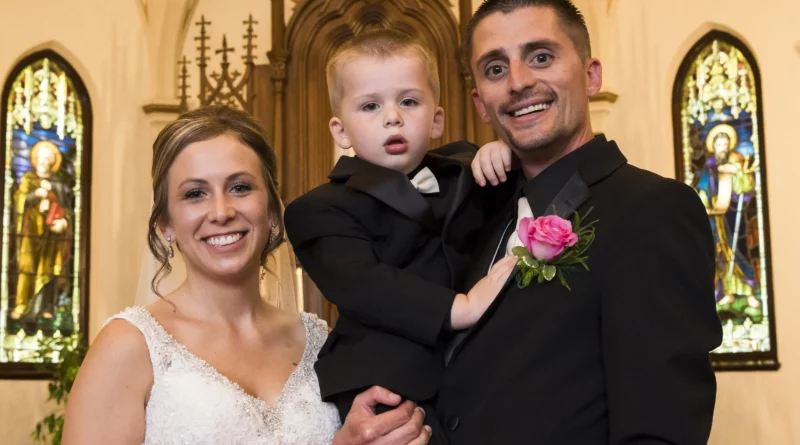Eric Danowski Medical Marvel in Erie Pennsylvania
From the moment he was born, Eric Danowski faced challenges that few infants ever encounter. By just a few months of age, his tiny body was unable to process toxins properly, signaling severe liver dysfunction. Hospitalized almost continuously, he grew weaker as jaundice deepened and his weight remained perilously low. At eleven months old, after exhaustive medical evaluations, Eric’s doctors determined that a liver transplant was his only chance for survival. Under the renowned care of transplant surgeon Dr. Tom Starzl, a groundbreaking first transplant was performed. Yet despite the surgical team’s best efforts, Eric’s young immune system rejected that first graft, leaving him in an even more precarious condition.
Life Before the Second Transplant
In the weeks following the failed graft, Eric’s parents—Debbie and Carl—watched their son struggle as his liver function plummeted. He required constant monitoring in the pediatric intensive care unit, enduring blood draws, catheterizations, and the side effects of high-dose immunosuppressive medications. Every day brought fresh worry: small injuries risked infection, minor illnesses threatened overwhelming complications, and even feeding him posed a battle. Yet through it all, Eric showed remarkable resilience, clinging to life even as alarms sounded around him. Determined to give him another chance, his family and medical team agreed to pursue a second transplant as soon as a suitable donor organ became available.
The Second Liver Transplant Procedure
On March 2, 1988, at the University of Pittsburgh Medical Center’s Children’s Hospital, Eric was wheeled into the operating room for his second transplant. The surgical suite was a hub of focused energy as Dr. Starzl and his team prepared the donor liver, carefully removing remnants of the failed graft before implanting the new organ. For hours, complex vascular and biliary connections were sutured under the watchful eyes of anesthesiologists and nurses. Eric’s tiny vessels and bile ducts demanded extraordinary precision; any leak or clot risked catastrophic failure. When, at last, the final suture was tied and blood flow restored, the team held its breath as color returned to the graft and biopsy samples confirmed healthy tissue. The initial signs were encouraging: Eric’s vital signs stabilized, his liver enzymes began trending downward, and his tiny body accepted the new organ—at least, for a time.
Postoperative Complications and Viral Pneumonia
In the third week after surgery, hope gave way to alarm. Despite aggressive preventive measures, Eric developed a high fever, rapid breathing, and persistent oxygen desaturation. Chest X-rays revealed widespread infiltrates consistent with viral pneumonia. Within hours he was intubated and placed on mechanical ventilation; intravenous antiviral and antibiotic therapies were begun, but his fragile condition meant that even a slight drop in oxygen could be fatal. Dr. Starzl and his colleagues conferred daily, adjusting immunosuppression to strike a balance between keeping the virus at bay and preventing organ rejection. As Eric fought to breathe, his parents faced the unimaginable: their first real fear that he might not survive this second life-saving operation.
A Community Rallies: The Power of Prayer
Amid the bleakest days of Eric’s battle, his mother reached out in desperation to a local reporter at the Erie Daily Times. In an emotional phone call, she asked whether readers across Erie County would join her family in prayer for her son’s survival. Moved by her plea, the journalist ran a heartfelt appeal, asking congregations, prayer groups, and individuals of all faiths to lift Eric up in hopes of divine intervention. Within days, hundreds of parishioners assembled at churches, homes, and hospital corridors, forming prayer chains at every hour. Some families recited psalms by Eric’s bedside, while others joined in silent meditation. The belief that collective faith might tip the scales infused the medical staff with renewed determination and gave Debbie and Carl a glimmer of hope in the face of overwhelming odds.
The Road to Recovery
Remarkably, just days after the prayer campaign began, Eric’s condition began to improve. His fevers subsided, making it possible to wean him from the ventilator. Oxygen requirements decreased until he could breathe unassisted, and his chest X-rays cleared. Liver function tests—which had hovered at dangerous levels—started trending toward normal, signaling that the second graft had finally taken hold. Each small milestone—tolerating feeds without vomiting, maintaining body temperature, gaining weight—was met with celebration by nurses and surgeons who had once feared losing him. By March’s end, Eric was off most life-support measures, and within weeks he was well enough to transfer out of the intensive care unit and begin feeding and play therapies.
A Third Chance: The Third Transplant
Although Eric had beaten viral pneumonia and stabilized with his second liver, long-term complications from rejection and scarring prompted the medical team to plan a third transplant. In late 1988, Eric was readmitted for the procedure. This time, the surgery proceeded with fewer complications: the donor match was excellent, surgical techniques had improved further, and Eric’s body was ready to accept another graft. The third transplant proved successful, and no further rejection episodes occurred. Eric’s recovery from his third surgery was swift compared to prior ordeals, reflecting both his expanding resilience and advancements in pediatric transplant care.
Building a New Life
By the time Eric celebrated his second birthday, he had left the hospital behind and was growing into a lively toddler. His speech, motor milestones, and social development all caught up rapidly, as if determined to make up for lost time. While his early years had been dominated by medical crises, thereafter he enjoyed a childhood filled with school, playdates, and family vacations. Regular checkups and routine blood tests became rites of passage rather than life-or-death events. As he entered adolescence and adulthood, Eric embraced sports, music, and academics, carrying with him both scars and an unshakable gratitude for every moment.
Legacy and Giving Back
Eric’s miraculous survival and the compassion shown by Erie’s community left a lasting imprint on his family. In 2017, inspired by the support that lifted him during his darkest hours, Eric and his parents founded the Transplant Hope Foundation. The nonprofit provides financial grants to families of pediatric transplant patients, helping cover medical bills, travel costs, and living expenses when a child’s fight for life demands extraordinary resources. Through annual fundraisers, advocacy, and partnerships with hospitals, Eric’s foundation ensures that no family faces the transplant journey alone—just as he never did.
Discover more from City Towner
Subscribe to get the latest posts sent to your email.




